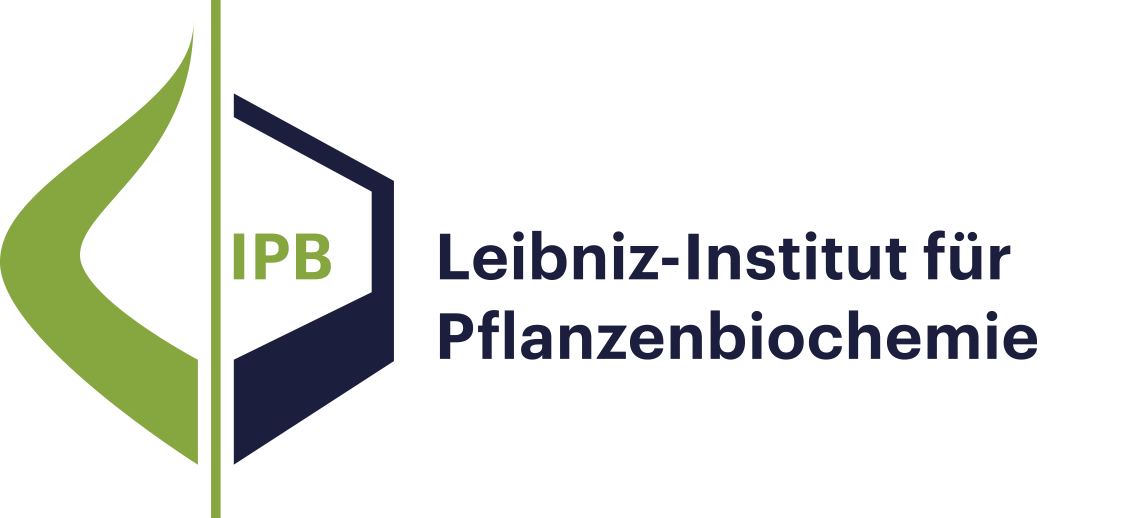Publikationen Program Center MetaCom
- Results as:
- Print view
- Endnote (RIS)
- BibTeX
- Table: CSV | HTML
Publications
Publications
Publications
Publications
Diese Seite wurde zuletzt am 03 Sep 2024 geändert.
Research Mission and Profile
Molecular Signal Processing
Bioorganic Chemistry
Biochemistry of Plant Interactions
Cell and Metabolic Biology
Independent Junior Research Groups
Program Center MetaCom
Publications
Good Scientific Practice
Research Funding
Networks and Collaborative Projects
Symposia and Colloquia
Alumni Research Groups
Publikationen
Publikationen Program Center MetaCom
Publications
Herbivores sharing host plants are often temporally and spatially separated, limiting direct interactions between them. Nevertheless, as observed in numerous aboveground study systems, they can reciprocally influence each other via systemically induced plant responses. In contrast, examples of such plant-mediated interactions between belowground herbivores are scarce; however, we postulated that they similarly occur, given the large diversity of root-interacting soil organisms. To test this hypothesis, we analyzed the performance of cabbage root fly (Delia radicum) larvae feeding on the main roots of field mustard (Brassica rapa) plants whose fine roots were infected by the root-knot nematode (Meloidogyne incognita). Simultaneously, we studied the effects of M. incognita on D. radicum-induced defense responses and the accumulation of primary metabolites in the main root. We observed that almost 1.5 times as many D. radicum adults emerged from nematode-infected plants, indicating a facilitation effect of M. incognita infection. Although we observed increases in the accumulation of proteins and two essential amino acids, the strongest effect of nematode infection was visible in the defense response to D. radicum. We observed a 1.5 times higher accumulation of the defense-related phytohormone JA-Ile in response to D. radicum on nematode-infected plants, coinciding with a 75% increase in indole glucosinolate concentrations. Contrastingly, concentrations of aliphatic glucosinolates, secondary metabolites negatively affecting D. radicum, were 10-25% lower in nematode-infected plants. We hypothesize that the attenuated aliphatic glucosinolate concentrations result from antagonistic interactions between biosynthetic pathways of both glucosinolate classes, which was reflected in the expression of key biosynthesis genes. Our results provide explicit evidence of plant-mediated interactions between belowground organisms, likely via systemically induced responses in roots.
Publications
Plant respiration is one of the greatest global metabolic fluxes, but rates of respiration vary massively both within different cell types as well as between different individuals and different species. Whilst this is well known, few studies have detailed population-level variation of respiration until recently. The last 20 years have seen a renaissance in studies of natural variance. In this review, we describe how experimental breeding populations and collections of large populations of accessions can be used to determine the genetic architecture of plant traits. We further detail how these approaches have been used to study the rate of respiration per se as well as traits that are intimately associated with respiration. The review highlights specific breakthroughs in these areas but also concludes that the approach should be more widely adopted in the study of respiration per se as opposed to the more frequently studied respiration-related traits.
Publications
Varying light conditions elicit metabolic responses as part of acclimation with changes in ascorbate levels being an important component. Here, we adopted a genome-wide association-based approach to characterize the response in ascorbate levels on high light (HL) acclimation in a panel of 315 Arabidopsis (Arabidopsis thaliana) accessions. These studies revealed statistically significant SNPs for total and reduced ascorbate under HL conditions at a locus in chromosome 2. Ascorbate levels under HL and the region upstream and within PAS/LOV PROTEIN (PLP) were strongly associated. Intriguingly, subcellular localization analyses revealed that the PLPA and PLPB splice variants co-localized with VITAMIN C DEFECTIVE2 (VTC2) and VTC5 in both the cytosol and nucleus. Yeast 2-hybrid and bimolecular fluorescence complementation analyses revealed that PLPA and PLPB interact with VTC2 and that blue light diminishes this interaction. Furthermore, PLPB knockout mutants were characterized by 1.5- to 1.7-fold elevations in their ascorbate levels, whereas knockout mutants of the cry2 cryptochromes displayed 1.2- to 1.3-fold elevations compared to WT. Our results collectively indicate that PLP plays a critical role in the elevation of ascorbate levels, which is a signature response of HL acclimation. The results strongly suggest that this is achieved via the release of the inhibitory effect of PLP on VTC2 upon blue light illumination, as the VTC2-PLPB interaction is stronger under darkness. The conditional importance of the cryptochrome receptors under different environmental conditions suggests a complex hierarchy underpinning the environmental control of ascorbate levels. However, the data we present here clearly demonstrate that PLP dominates during HL acclimation.
Publications
Metabolomics is facing a major challenge: the lack of knowledge about metabolites present in a given biological system. Thus, large-scale discovery of metabolites is considered an essential step toward a better understanding of plant metabolism. We show here that the application of a metabolomics approach generating structural information for the analysis of Arabidopsis (Arabidopsis thaliana) mutants allows the efficient cataloging of metabolites. Fifty-six percent of the features that showed significant differences in abundance between seeds of wild-type, transparent testa4, and transparent testa5 plants could be annotated. Seventy-five compounds were structurally characterized, 21 of which could be identified. About 40 compounds had not been known from Arabidopsis before. Also, the high-resolution analysis revealed an unanticipated expansion of metabolic conversions upstream of biosynthetic blocks. Deficiency in chalcone synthase results in the increased seed-specific biosynthesis of a range of phenolic choline esters. Similarly, a lack of chalcone isomerase activity leads to the accumulation of various naringenin chalcone derivatives. Furthermore, our data provide insight into the connection between p-coumaroyl-coenzyme A-dependent pathways. Lack of flavonoid biosynthesis results in elevated synthesis not only of p-coumarate-derived choline esters but also of sinapate-derived metabolites. However, sinapoylcholine is not the only accumulating end product. Instead, we observed specific and sophisticated changes in the complex pattern of sinapate derivatives.
Diese Seite wurde zuletzt am 03 Sep 2024 geändert.

